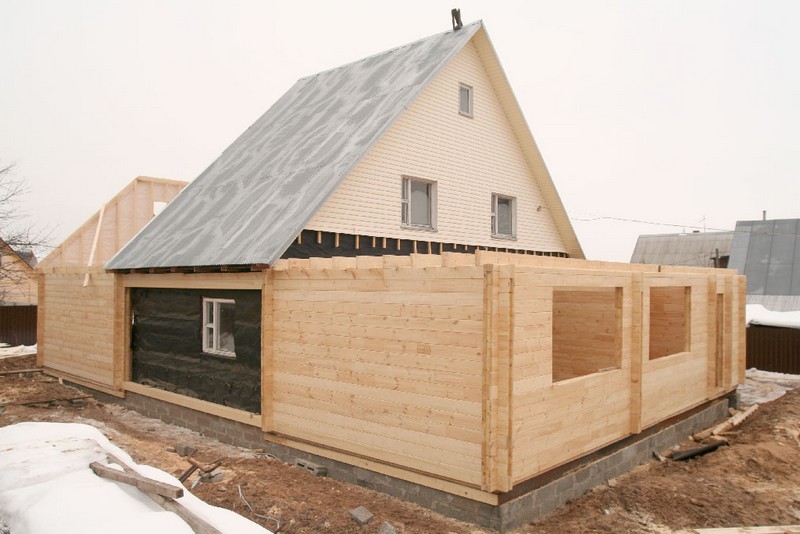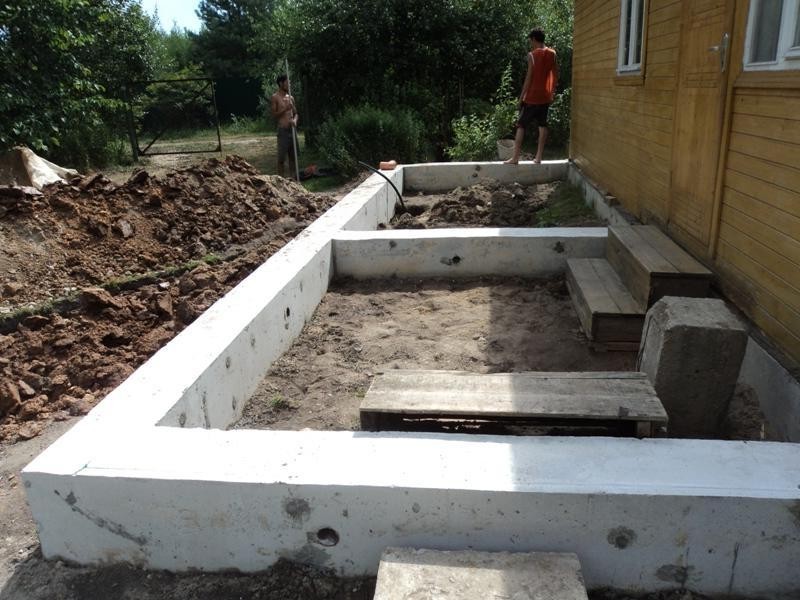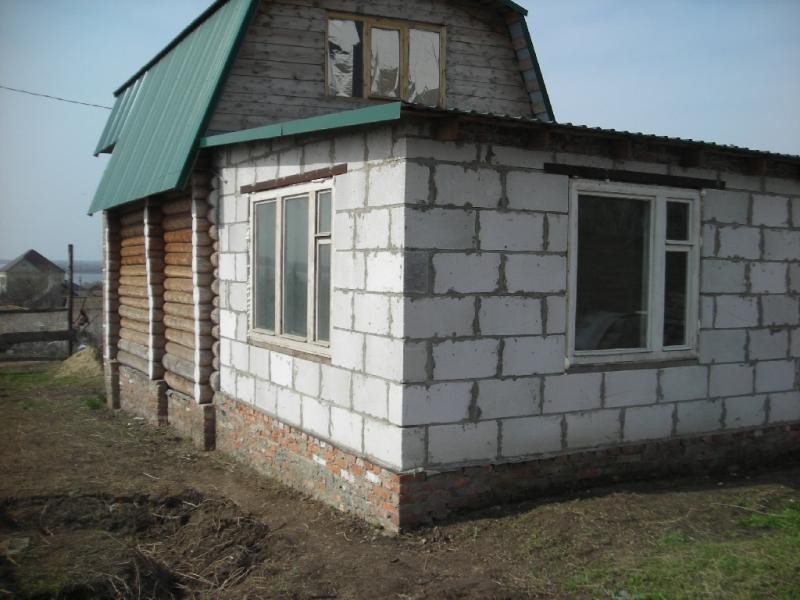How to make an extension to the house: technologies and materials
One of the advantages of living in the private sector is the possibility of self-construction according to your own project - you can build a house of any size (naturally, within the available land area) and then, if necessary, increase it in size. If the strength of the foundation allows, the house can be increased in height or, conversely, increased in length or width - so to speak, make an extension to it, which will be discussed in this article. Together with the site site, we will deal with materials and technologies that allow us to independently solve the question of how to make an extension to the house? And we will start with the study of materials, where we will figure out which materials and under what circumstances are best used.
How to make an extension to the house with your own hands photo
How to make an extension to the house: the choice of materials
In general, there is one iron rule that is better not to break. It sounds like this - what the house is built from, from which you need to make an extension to it. At least that was the case before, when the choice of building materials and technologies was limited to bricks, other blocks and clay. Today, during the advanced technological progress, things are a little different - there are technologies that allow you to break this rule, and grossly. Now you can easily attach a brick building to a wooden house, revet it with the same and get a building that looks solid. In general, it is not at all necessary to become attached to the old building in terms of material.
Now in more detail about the most popular materials, through which you can quite simply solve the question of how to make an extension to the house with your own hands?
- Blocks of various formats and bricks. It makes no sense to break them into separate subgroups, since the technology for their use is, in general, the same type - a foundation is being built on which, block by block, brick by brick, the walls of the extension are laid out. The only thing that distinguishes this whole thing is the properties and qualities of the materials - this is important, and it is imperative to take them into account when choosing materials. Let's start with the classics -. Strong, durable, material - considering it is very expensive. Moreover, the brick is a rather cold material, which will additionally have to be insulated, and this is a plus for the cost of the extension. In addition, this material requires a solid foundation. In this regard, it looks much more attractive - its price is a couple of times lower, the blocks are larger and the material itself is much warmer. Where the brick will need to be laid out in three rows, it is enough to lay the cinder block in two rows. Aerated concrete looks even more attractive - it is light, and the question of how to properly make an extension to the house can be solved even on a shallow (0.5 meter) foundation. Moreover, it is a very warm and porous material, which, with a thickness of 200 mm, is able to effectively retain heat in the premises. After plastering, it acquires a very decent strength, which makes the structure reliable. In principle, other block materials can also be considered - for example, shell rock is often used, it has shown itself well in terms of maintaining heat in rooms (popularly called sawdust concrete).

How to make an extension to the house photo
- . To date, this is the most optimal option not only for an extension, but also for the construction of private houses in general - the essence of this technology is the manufacture of a wooden and metal frame, followed by its sheathing with such sheet material as. Insulation is laid inside the frame, which makes the structure very warm. By and large, now it is the cheapest technology, which, among other things, boasts simplicity and a very fast pace of construction. The only thing that the frame extension is not able to boast of is its durability. Although who knows - with proper observance of technology and proper care, it can stand for about a century. We will talk a little further about how to make a frame extension to the house.
In addition to the options described above, you can consider the technology of building an extension using the method of monolithic concreting. Moreover, it is not at all necessary to use real heavy concrete for these purposes - the so-called slag concrete may be the best option in such a case. Slag houses are very warm in winter and cool in summer - they are durable and able to serve for a very long time.
How to make the foundation of an extension to the house: features
The main problem in making the foundation of the extension is to connect the new and the old base. If it is done incorrectly or not done at all, then no matter how you splice the walls of two separate buildings, a crack will still appear at the place of their joining. Moreover, it is through, with all the ensuing consequences - heat leakage, condensation and, as a result, the appearance of fungus and mold in this place. In general, there is little pleasant. That is why special attention should be paid to the following points.

In principle, these three nuances will be quite enough to securely connect the two foundations together. Alternatively, if you, of course, can get to the bottom of the base of the existing house, extensions can be added a little under it.
How to make an extension to a brick house: the nuances of joining walls
Docking a frame structure to a brick or any other block house is not a problem at all - a vertical beam of a wooden frame or a profile of a metal frame of a structure is simply attached to the wall of the building with anchors and that's it! There are practically no nuances here - except perhaps the observance of the vertical level of this beam and the sealing of the junction. The last operation is performed either with the help of mounting foam, or with the help of the so-called PSUL tape (pre-compressed sealing tape).

How to make an extension to a brick house photo
Another thing is the docking of a brick or block building with a similar house. Here things are somewhat more complicated, and you cannot do without special embedded parts or ligaments. It is possible to ensure a reliable connection of the walls without bandaging the blocks only by driving iron embedded parts every 4-5 rows of blocks. Holes are drilled in the wall of the existing building (two, one on each side of the block at a distance of 3 cm from the edge) - reinforcement is hammered into them, which should protrude from the wall of the house by at least 30 cm. When a new block is laid on it, the cement will securely bind the two walls into a single whole product. As an option, again, you can make potholes with a puncher, which, paired with reinforcement, will ensure a reliable connection of two block walls with each other.

How to make an extension to a wooden house photo
And in conclusion, the topic of how to make an extension to the house, a few words about the connection of walls with a block or brick extension. This combination of buildings is also common, and it will not be superfluous to know how they are connected. In fact, you will have to make a metal girth for the blocks - it is attached to the wall of a wooden house by means of powerful self-tapping screws and is a kind of channel, inside of which a block or brick wall exactly enters. By and large, this is the same option that is used to attach a wooden extension to a brick house, only exactly the opposite.
